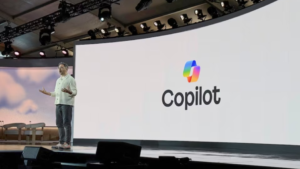Measuring Consumer Engagement for Copilot: Insights from Microsoft’s AI Chief

Understanding Microsoft’s Copilot: Insights from Their AI Chief
What is Microsoft Copilot?
Microsoft Copilot is an advanced artificial intelligence tool designed to enhance productivity and streamline workflows across various applications such as Word, Excel, and PowerPoint. It integrates seamlessly into these platforms, enabling users to harness the power of AI to assist with tasks ranging from drafting documents to producing data insights.
The Role of Microsoft’s AI Chief
Microsoft’s AI chief plays a crucial role in evaluating how well Copilot is being accepted and utilized by consumers. By focusing on data analytics and user feedback, this position involves measuring the success of Copilot and determining what improvements can be made to enhance the user experience. This feedback loop is vital for ensuring the tool meets evolving user needs.
Key Metrics for Measuring Success
To gauge how well Copilot is performing in the market, Microsoft’s AI team focuses on several key metrics:
- User Engagement: Tracking how often users engage with Copilot helps identify its value and practical application in daily tasks.
- Task Completion Rate: Measuring how effectively users are completing tasks with the help of Copilot provides insight into the tool’s reliability and usefulness.
- User Satisfaction: Collecting feedback through surveys and user interviews helps Microsoft understand how users perceive the value of Copilot and the areas needing improvement.
- Adoption Rates: Monitoring the number of users adopting Copilot over time highlights its market penetration and potential growth.
Copilot’s Features
Copilot offers a range of features designed to improve workflow:
- Automated Suggestions: It uses machine learning algorithms to suggest text, data visualizations, and formulas, making it easier for users to complete tasks.
- Data Insights: Copilot can analyze data trends within spreadsheets and provide actionable insights, saving users time on manual analysis.
- Content Drafting: In applications like Word, it can help generate outlines or entire sections of text based on user prompts.
- Natural Language Processing: Users can interact with Copilot using conversational language, which reduces the learning curve for those unfamiliar with complex command structures.
Consumer Feedback Mechanisms
Microsoft has employed various methods to gather consumer feedback on Copilot:
- Surveys: Regularly distributed surveys help the company gauge user satisfaction and identify specific issues.
- Beta Testing: By releasing Copilot as a beta version, Microsoft gathers real-time data from users, allowing for iterative improvements.
- User Interviews: Engaging directly with users provides qualitative insights that quantitative data might miss.
The Importance of Continuous Improvement
For AI tools like Copilot to remain relevant and effective, ongoing development is essential. Regular updates based on user feedback help to refine existing features, add new capabilities, and address user concerns. This process ensures that Copilot not only meets current expectations but also anticipates future needs.
Conclusion about Microsoft’s AI Initiatives
Microsoft’s approach to enhancing Copilot through consumer insights demonstrates a commitment to user-centered design. By focusing on feedback and adopting key performance metrics, they aim to create a powerful tool that genuinely enhances productivity in today’s fast-paced workplace. As the landscape of AI continues to evolve, Microsoft’s efforts will be crucial for maintaining their competitive edge in the tech industry.





